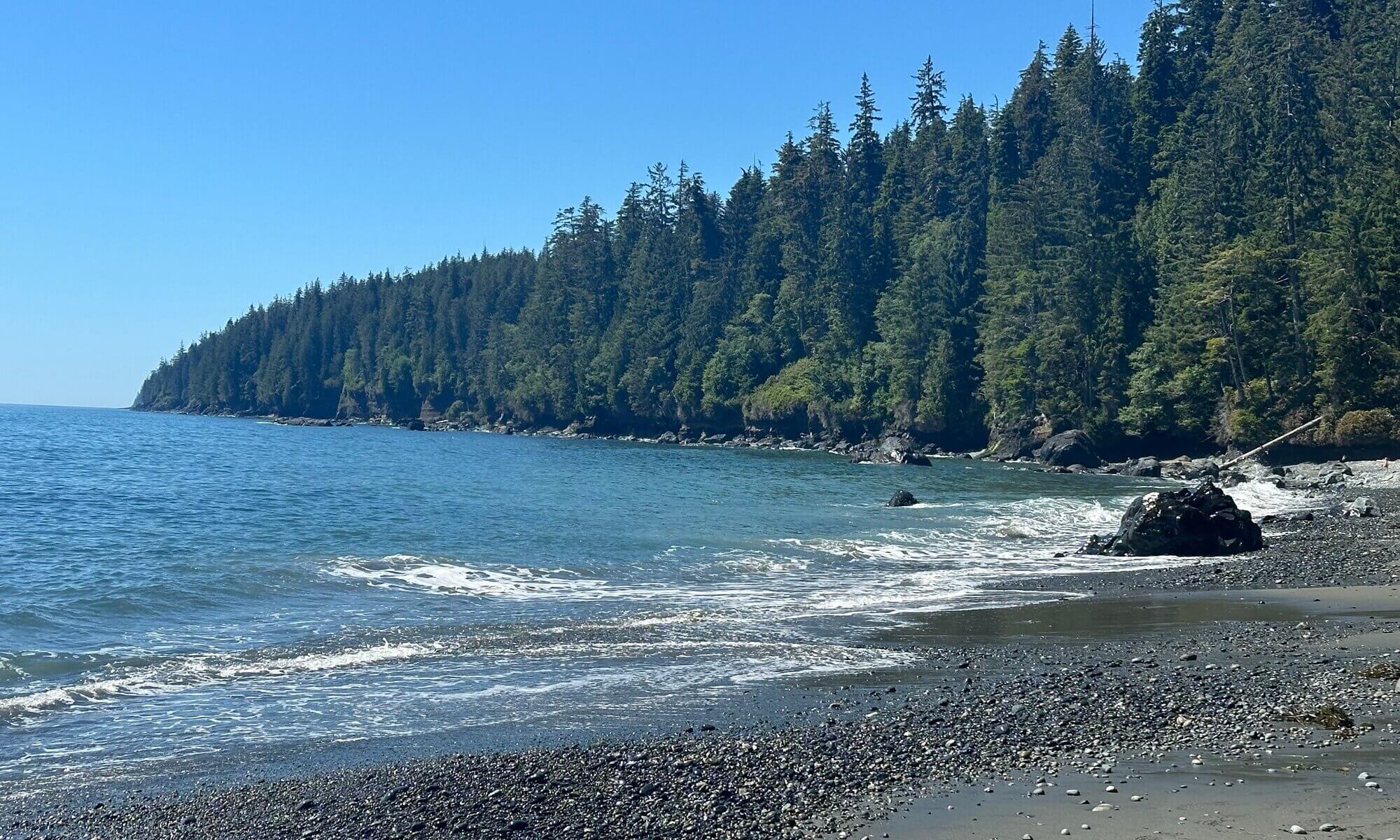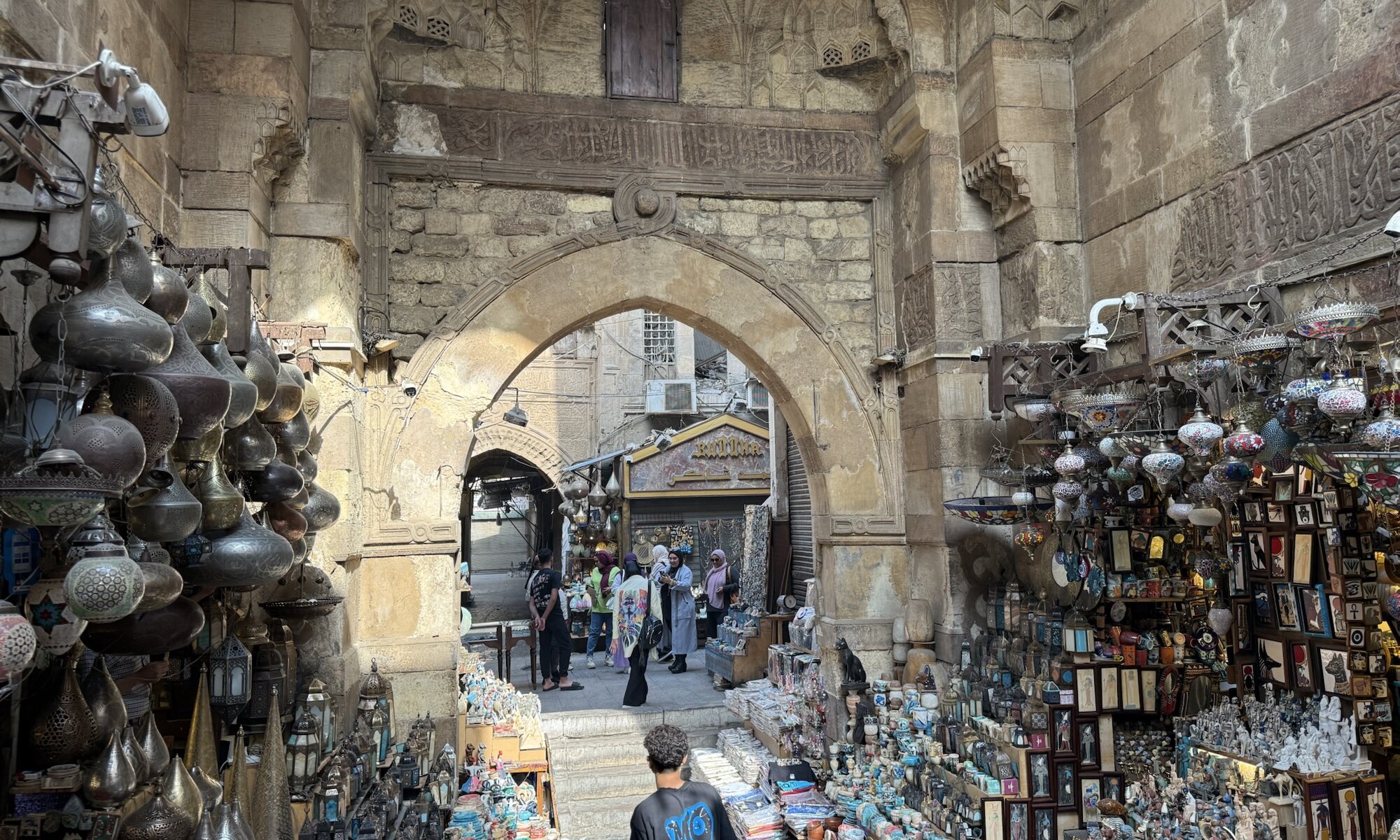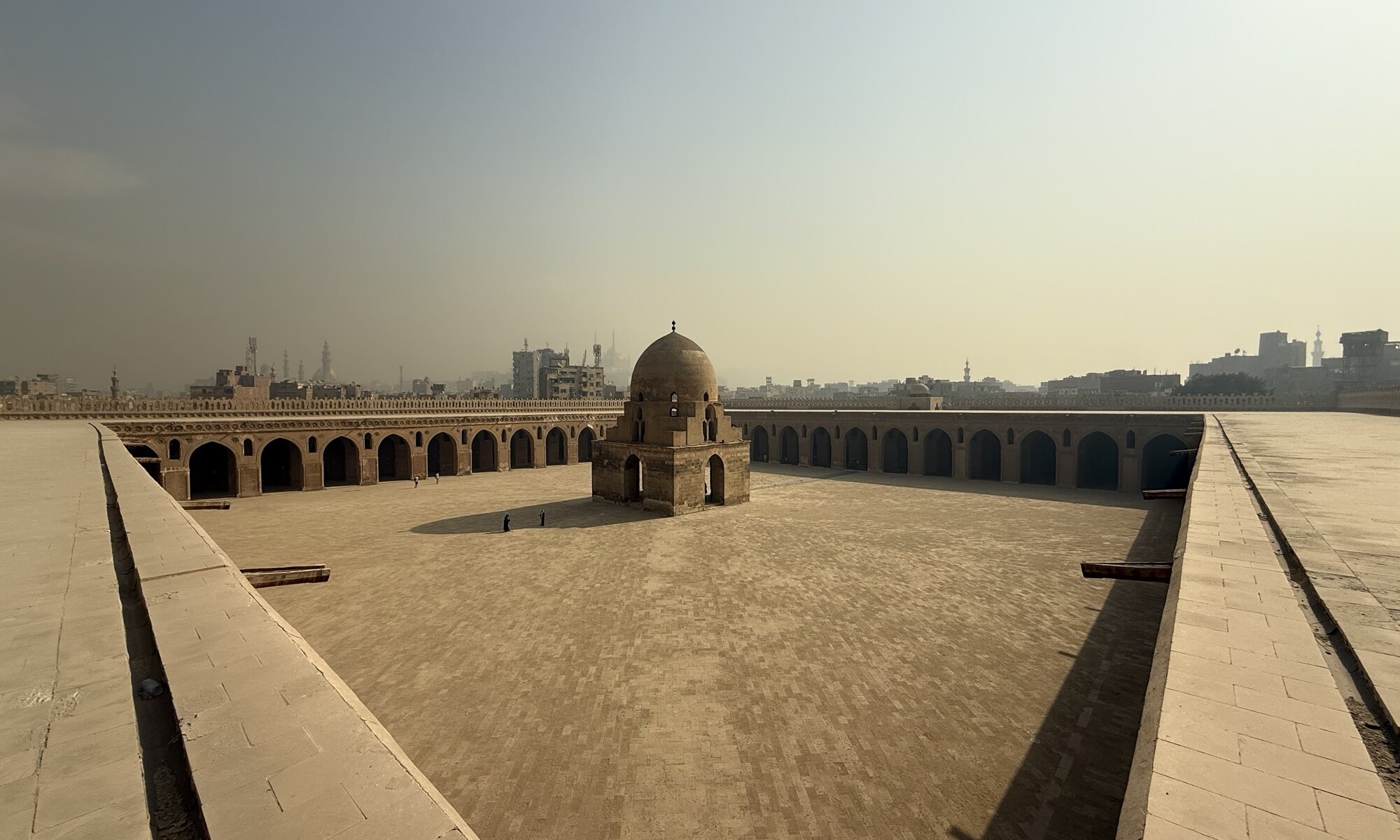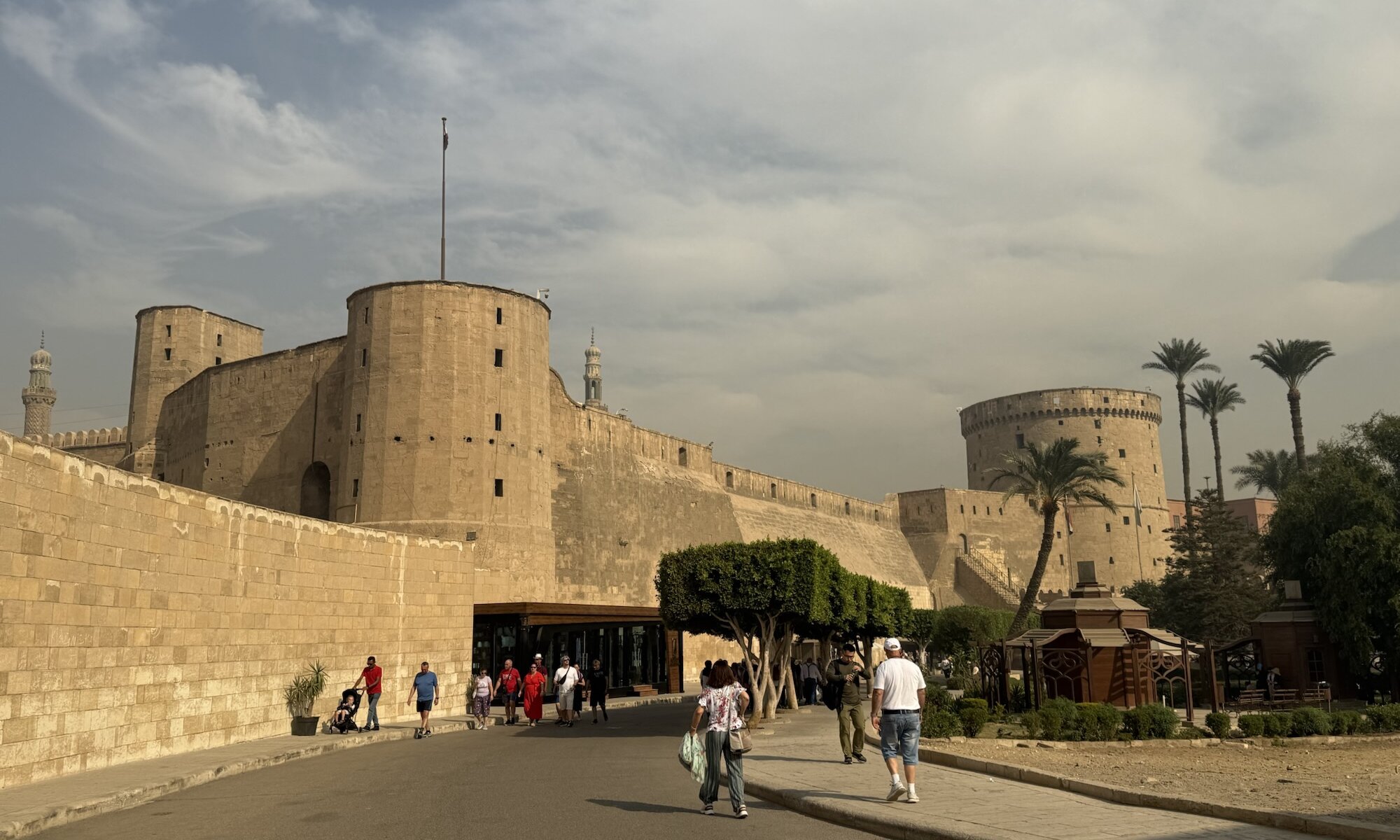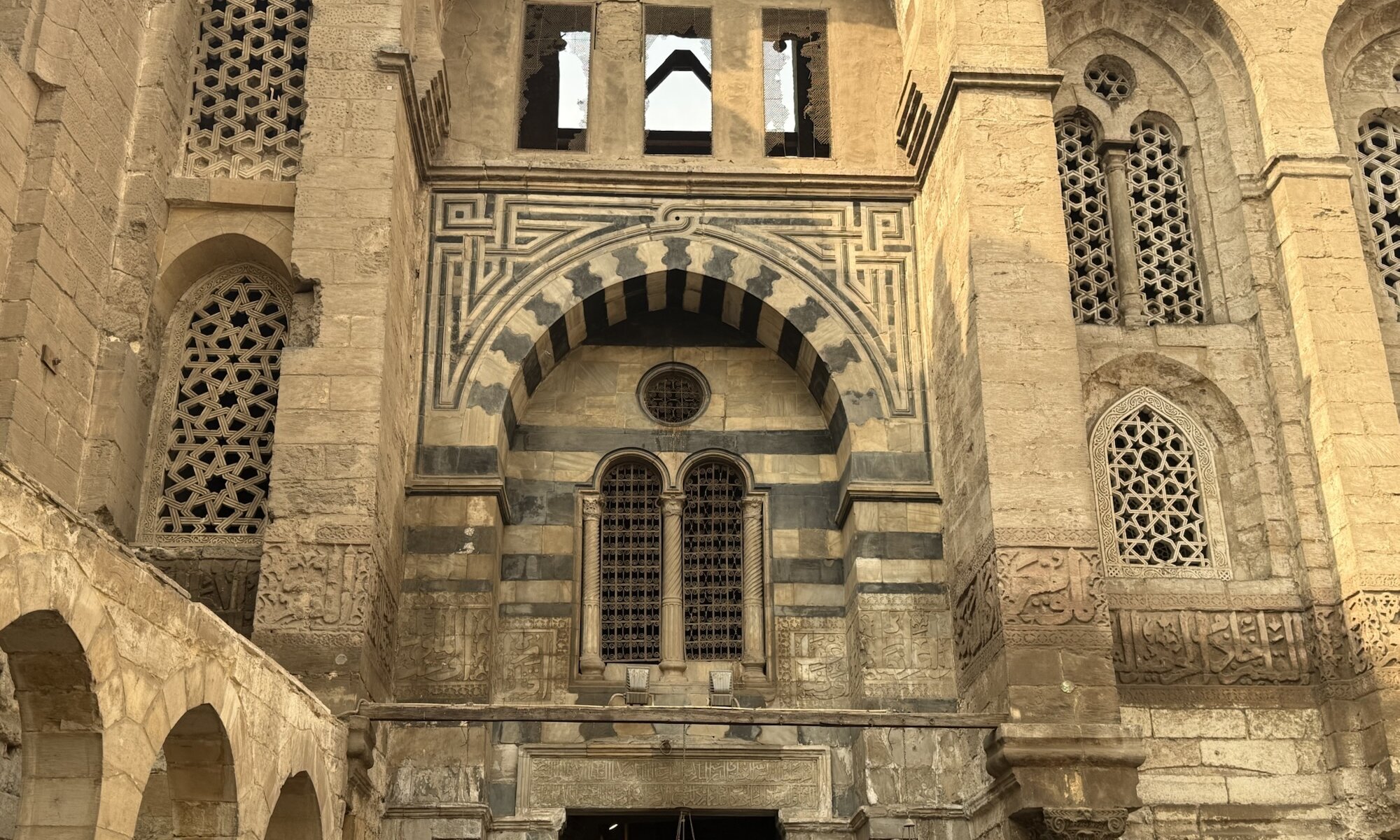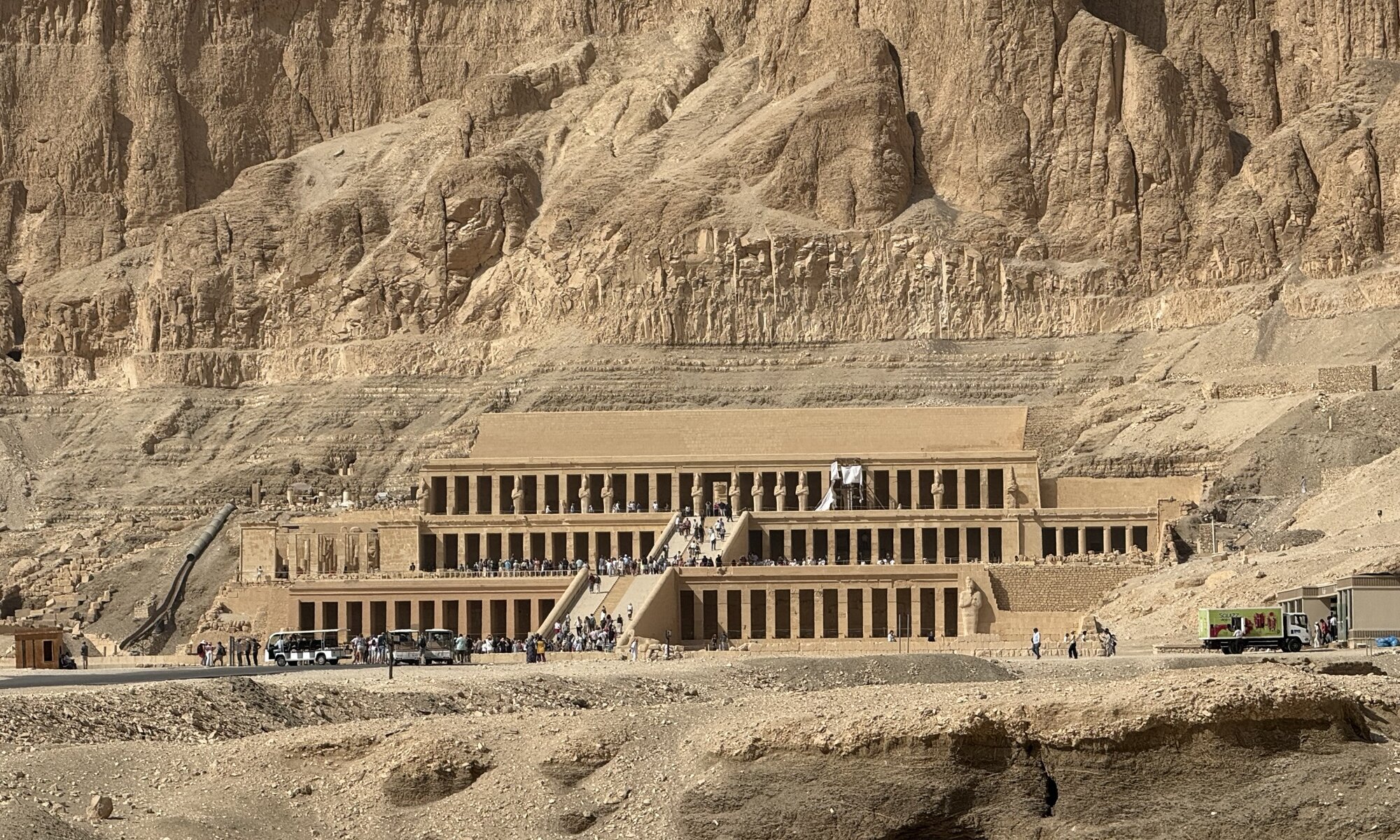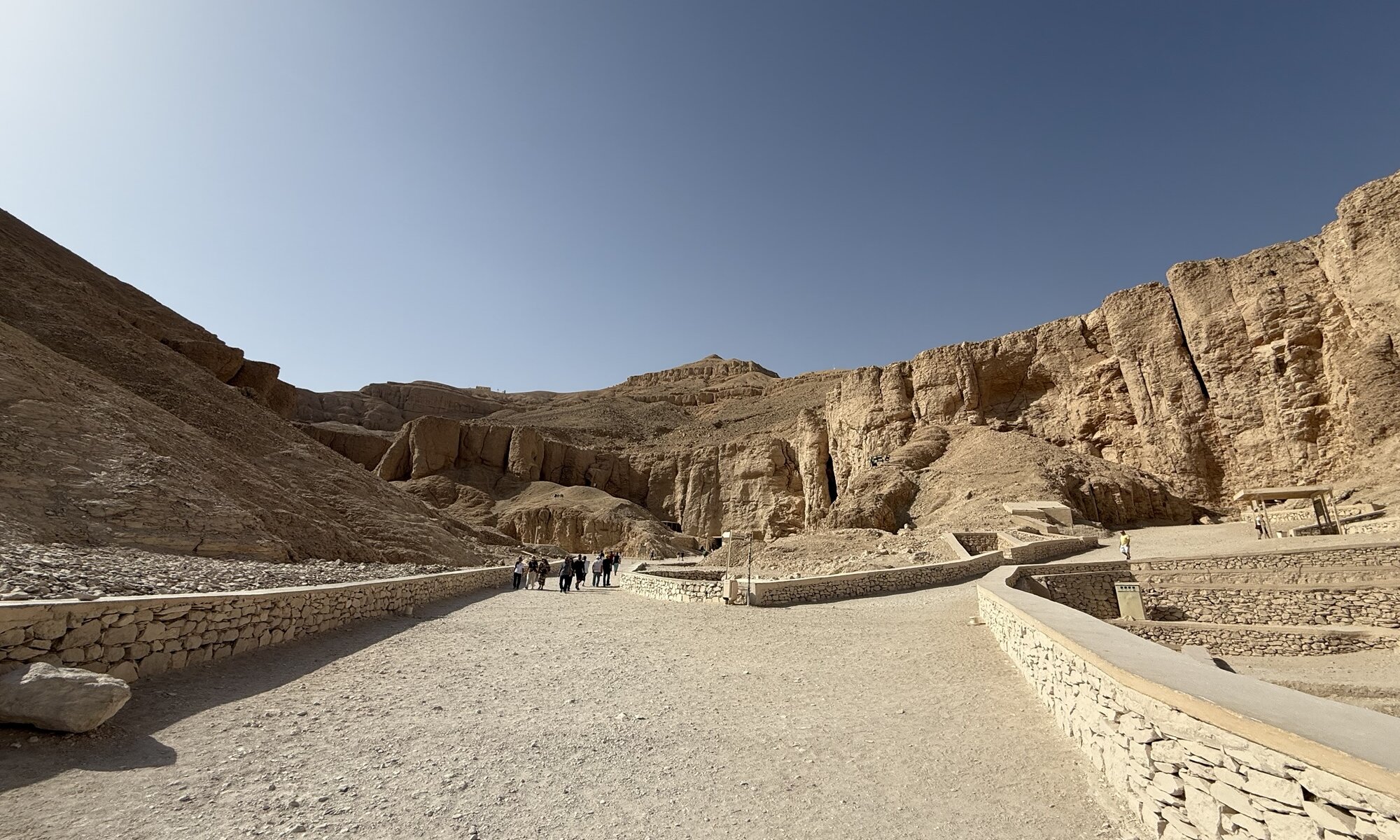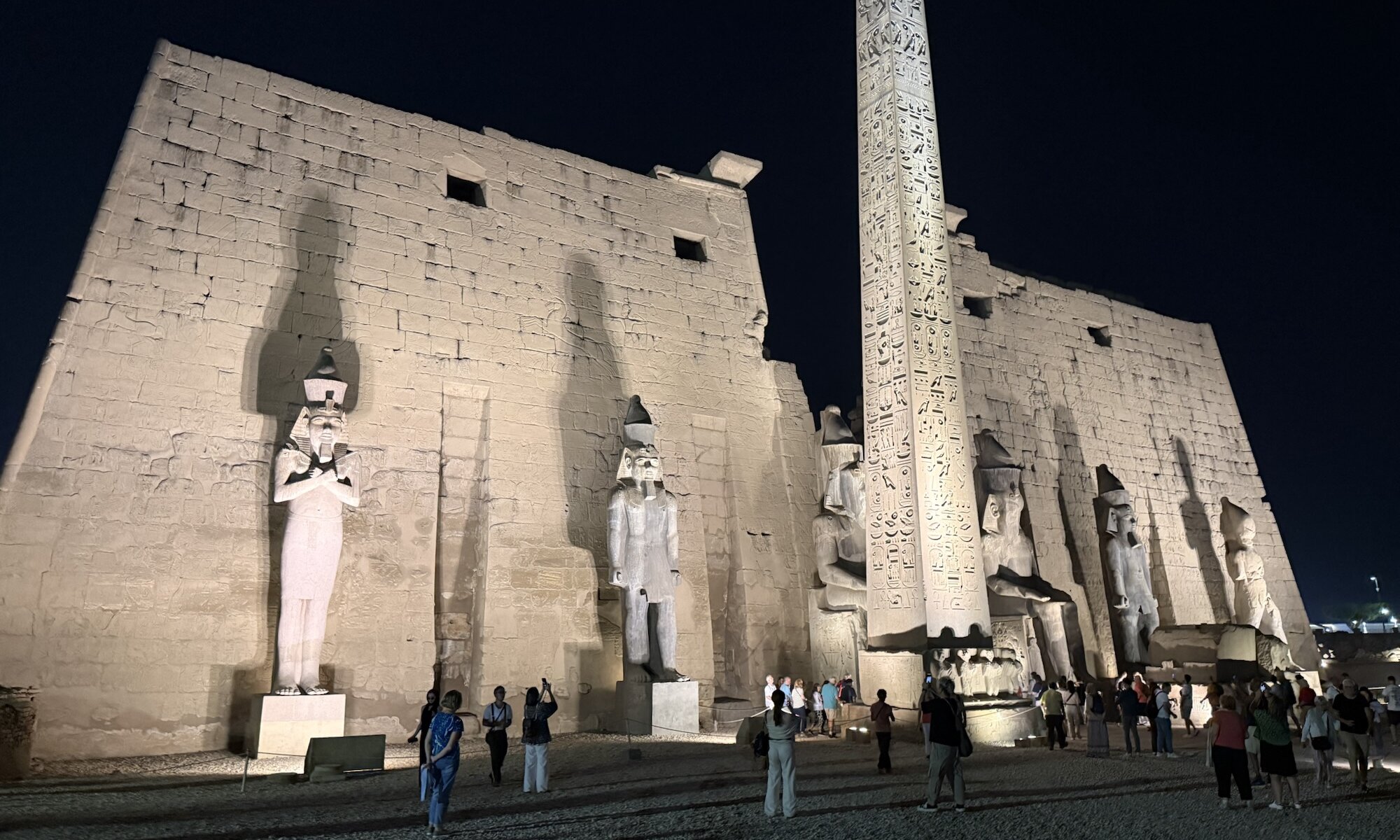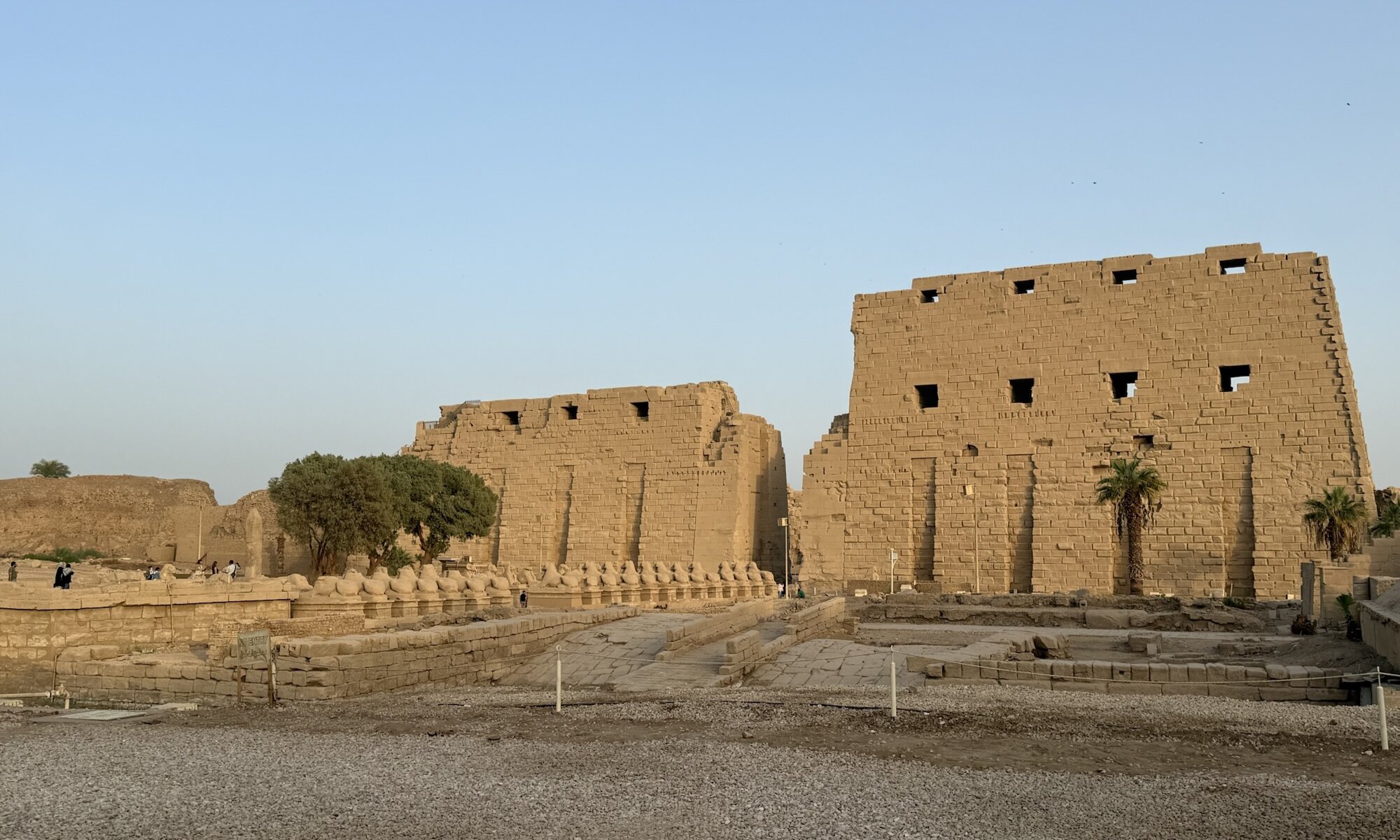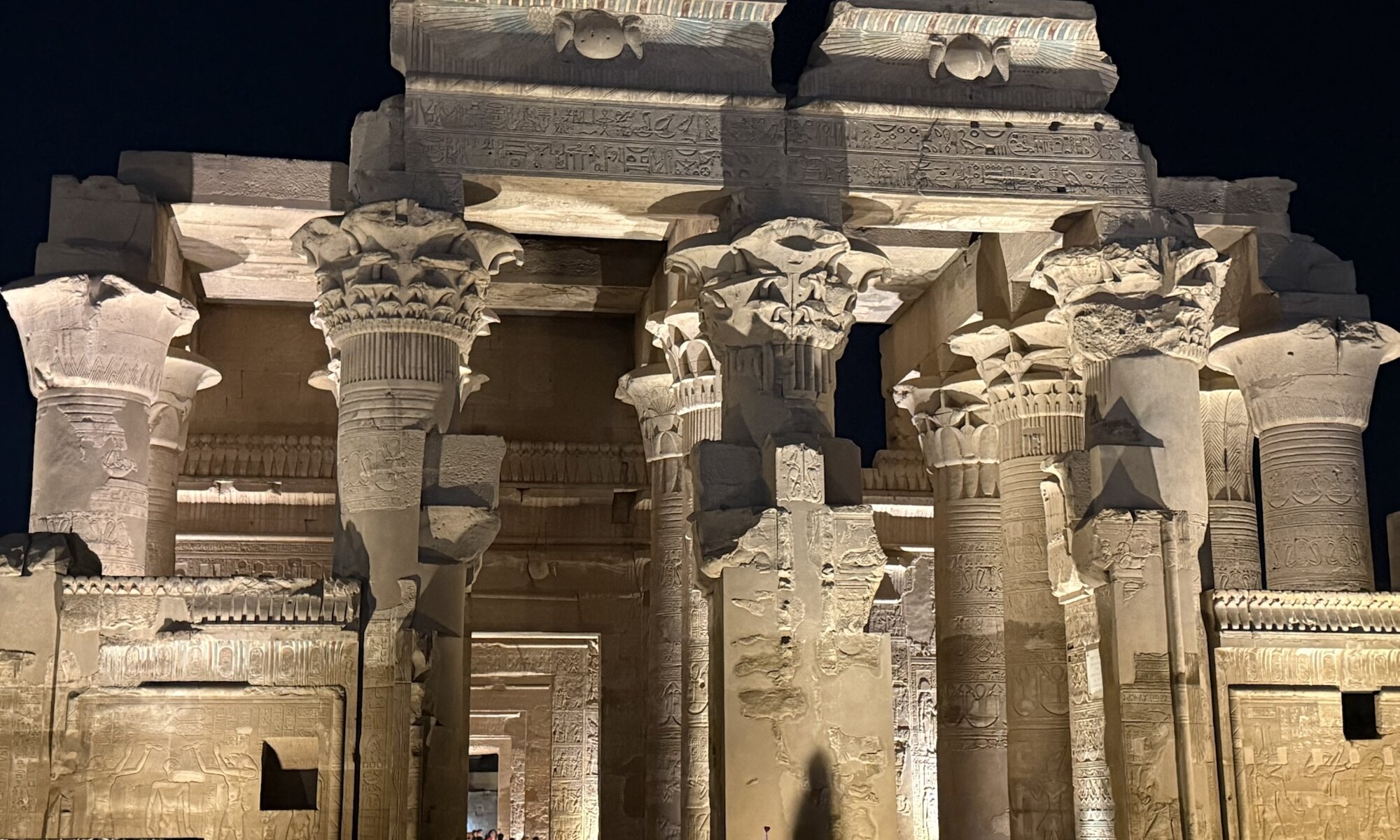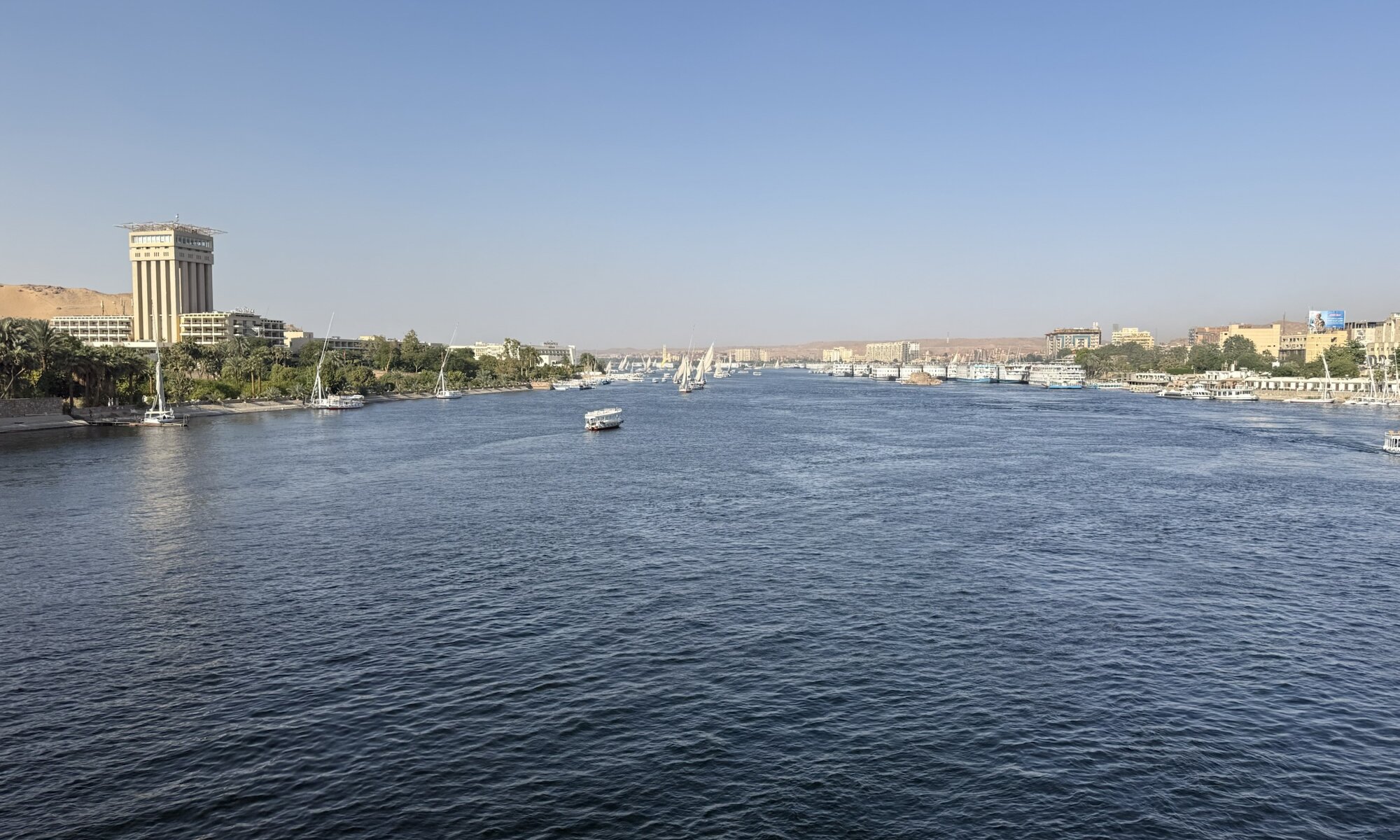Khan el-Khalili is one of القاهرة’s most iconic and historic bazaars, nestled in the heart of the city’s Islamic quarter. Founded in the late 14th century during the Mamluk era by Emir Djaharks el-Khalili, the market was originally built as a caravanserai, offering a place for merchants from across the Islamic world to rest and trade their goods. Over the centuries, this busy hub evolved from a vital stop on ancient trade routes into a vibrant marketplace where history seems to linger in every winding alleyway and ornate archway.
Continue reading “Khan el-Khalili”Ibn Tulun
Tucked away in the historic heart of القاهرة, the Mosque of Ibn Tulun stands as one of Egypt’s oldest and best-preserved religious monuments. Built in the ninth century by Ahmad ibn Tulun, the founder of the Tulunid dynasty, the mosque is renowned for having survived in a largely unaltered state since its construction. Its vast courtyard, elegant arcades, and striking stucco motifs make it a unique relic of early Islamic architecture, offering solace and serenity amid the vibrant chaos of the city’s labyrinthine streets.
Continue reading “Ibn Tulun”Citadel of Saladin
Perched atop the Muqattam Hills, the Citadel of Saladin in القاهرة is a formidable structure built in the late twelfth century as a bastion against Crusader invasions. Its founder, Sultan Salah al-Din – better known in the West as Saladin – sought to protect both the city of القاهرة and his newly established Ayyubid regime by constructing a military stronghold. The citadel’s elevated location offers commanding views over the city, a feature that ensured its status as the political and military heart of Egypt for centuries. Its robust walls and strategic placement enabled successive rulers to exert control over القاهرة and respond effectively to threats from outside the city’s boundaries.
Continue reading “Citadel of Saladin”Al-Mu’izz
Al-Mu’izz street in القاهرة stands as a vivid testament to the city’s illustrious Islamic past, extending from Bab Al-Futuh in the north down to Bab Zuweila in the south. Founded in the 10th century by the Fatimids and named after Caliph Al-Muizz li-Din Allah, the street once served as القاهرة’s principal thoroughfare – a bustling artery teeming with markets, religious establishments, and governmental edifices. Over successive eras, including those of the Ayyubids, Mamluks, and Ottomans, it retained its prominence, becoming home to some of the finest masterpieces of medieval Islamic architecture and serving as the city’s commercial, social, and spiritual heart.
Continue reading “Al-Mu’izz”Hatschepsut
The Temple of Hatshepsut, nestled at Deir el-Bahari on الأقصر’s west bank, stands as one of Egypt’s most striking monuments from the Eighteenth Dynasty. Built around 1479 BCE, the temple was commissioned by Hatshepsut herself, with construction lasting about fifteen years under the direction of her architect and close advisor, Senenmut. Its design drew inspiration from the neighbouring temple of Mentuhotep II, yet surpassed it in scale, ambition, and artistry, showcasing a series of terraced platforms, long ramps, and harmonious colonnades carved into the dramatic cliffs.
Continue reading “Hatschepsut”Valley of the Kings
The Valley of the Kings is a renowned archaeological site located on the west bank of the Nile near الأقصر, Egypt. It served as the burial ground for Egypt’s royalty and powerful nobles during the New Kingdom period, roughly from 1539 BC to 1075 BC. The valley consists mainly of rock-cut tombs, carved deep into the hillsides beneath the peak known as al-Qurn, which is shaped like a pyramid and likely symbolised the royal power of the New Kingdom pharaohs. This secluded location was chosen to deter grave robbers, guarded by special police known as the Medjay, and it marked a shift from the grand pyramid tombs of earlier times to more discreet, elaborate subterranean burial chambers.
Continue reading “Valley of the Kings”Luxor
The Temple of Luxor, situated on the east bank of the Nile in the ancient city of Thebes, dates back to approximately 1400 BCE during Egypt’s New Kingdom era. It was first constructed by Pharaoh Amenhotep III and subsequently expanded by notable rulers such as Tutankhamun and Ramses II. This temple complex was primarily dedicated to the Theban triad of the god Amun-Ra, his consort Mut, and their son Khonsu. Historically, the temple played a crucial role in religious and royal ceremonies, particularly the Opet Festival, an annual event where the statues of these deities were ceremonially transported from Karnak to الأقصر along an avenue lined with sphinxes, symbolizing the rejuvenation of kingship.
Continue reading “Luxor”Karnak
The Temple of Karnak, located on the east bank of the Nile in modern-day الأقصر, stands as one of the most extraordinary and extensive religious complexes in the ancient world. Its construction began around 1971 BCE during the reign of Senusret I in the Middle Kingdom and continued for approximately one and a half millennia through the contributions of about thirty successive pharaohs. Originally modest in scale, Karnak expanded to become a sprawling sacred site dedicated predominantly to the god Amun-Re, along with precincts honouring the gods Mut and Montu. This temple was not only a religious centre but a vibrant estate, housing priests and craftsmen who maintained its grandeur, making it a vital hub of worship and royal power in ancient Egypt.
Continue reading “Karnak”Kom Ombo
The Temple of Kom Ombo, situated on the east bank of the Nile in Upper Egypt, dates from the Ptolemaic period between roughly 180 and 47 BCE. It was initiated under Ptolemy VI Philometor and later enhanced by subsequent rulers like Ptolemy XII, with some Roman period additions. This temple is notable for its unusual and deliberate architectural symmetry, as it is dedicated to two distinct gods: Sobek, the crocodile god linked to fertility and the Nile, and Horus (Haroeris), the falcon-headed god of the sky and kingship. Kom Ombo’s dual design reflects this religious duality, incorporating two entrances, courts, hypostyle halls, sanctuaries, and chambers within one complex, making it unique among ancient Egyptian temples.
Continue reading “Kom Ombo”The Nile
The Nile river, often described as the lifeblood of Egypt, has shaped the geography and civilisation of North Africa for thousands of years. Flowing northwards for over 6,600 kilometres through eleven countries, it ultimately reaches the Mediterranean Sea, creating one of the world’s most fertile river deltas. Within Egypt, the river courses through an arid desert landscape, transforming it into a narrow corridor of greenery bordered by vast expanses of sand. This dramatic contrast between desert and life-giving water has determined where people have settled, how they have farmed, and even how their culture has developed.
Continue reading “The Nile”